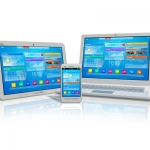SolutionOne Blog
What is Desktop Virtualization?
Desktop virtualization is a method in which one machine can run more than one Operating System at the same time regardless of architecture requirements. There are two models of Desktop Virtualization that will be discussed here: Local Virtualization and the Client/Server Virtualization Model.
Local Virtualization
Local Virtualization allows the user to run and store multiple Virtual Machine Images on their workstation. Local Virtualization requires more capable hardware than usual to run the images. The benefits can be seen when a development team needs to test software on multiple Operating Systems but purchasing separate machines is not feasible. Another instance is when your development team needs to run software that is only available on certain Operating Systems ex: needing to run a Windows program on a Mac desktop.
Client/Server Virtualization
The alternative to Local Virtualization uses the Client/Server model, where a centralized machine with capable hardware runs and stores Virtual Machine images. The client, typically a Thin Client or Dumb Terminal (or virtually any device with web browser access), only needs enough hardware capacity to run the software required to access the Virtual Machine over a network. This model provides significant portability options as the data and software can be accessed remotely from any machine or mobile device with the correct software and access privileges. The Client/Server model of Virtualization is especially beneficial when its necessary to upgrade all of the workstations in your company. Instead of buying several machines with typical hardware, you could buy one high end server and then several thin clients to access the Virtual Machines. Alternatively, you could buy the server hardware and then convert your old workstations to Thin Clients.
Desktop Virtualization can provide many benefits, from cost savings to increased productivity. The ability to access a users desktop from any machine will cut downtime as the user is not tied to one machine. If you have any questions regarding Desktop Virtualization, call us at (214) 299-8555 to find out how to drastically reduce your IT expenses while improving the productivity and mobility of your staff.

Comments